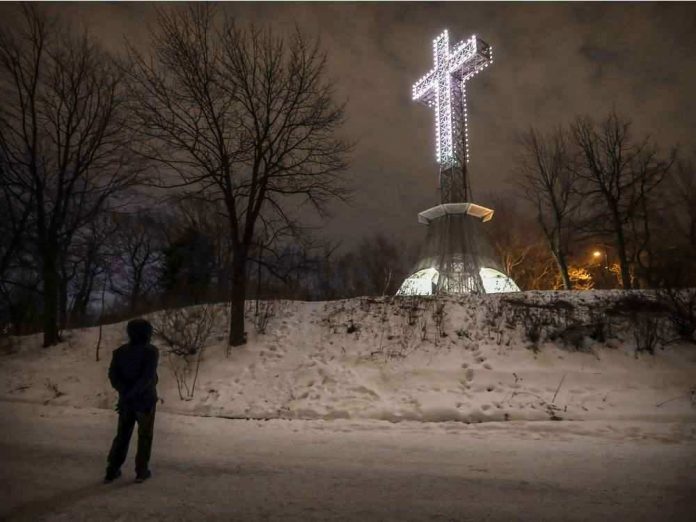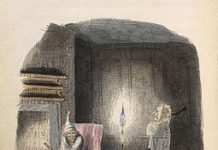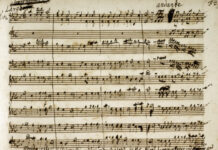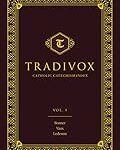When the cross atop Mount Royal was first erected in 1924, the Montreal Gazette described it as “a memorial to the survival of the Canadian people, whose growth was, in the early struggles, parallel to the growth of the faith which is represented by the cross.”
It is an historical fact that the beginnings of modern day Canada were established by explorer Jacques Cartier when he first set foot in Gaspe in 1534. It is also an historical fact that the Catholic Church was simultaneously established in Canada when a cross was erected by Cartier claiming this new land for Christ. On July 7, 1534, the celebration of the first recorded Holy Mass was also said by the French priest who accompanied the great explorer. And soon after, the evangelization of the indigenous peoples began so they too could be baptized into the Catholic faith.
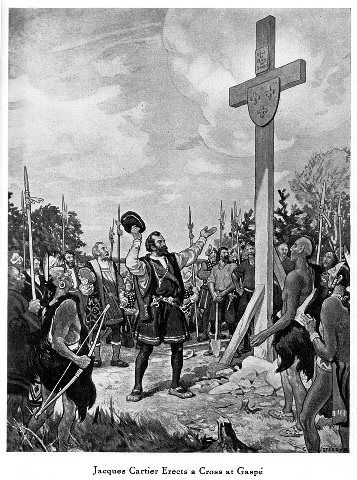
Thus, a new Christian nation was founded with no idea of its course ahead, or the depth of the blessings that would be poured out upon it as waves of newly arriving inhabitants built this new civilization from the ground up. Nor could they know that the huge effort involved would produce a new wave of saints, blesseds and venerables, all involved one way or another with establishing the Catholic Church in Canada. The first of these were the Canadian Martyrs – Sts. Jean de Brebeuf, Noel Chabanel, Anthony Daniel, Charles Garnier, Gabriel Lallemant, Isaac Joques, Rene Goupil and Jean de Lalande – eight Jesuit missionaries martyred in the mid-17th century and canonized by Pope Pius XI in 1930. Other saints followed as Canada recorded one historical event after another, including the Battle of Quebec in 1759 which marked the end of the long struggle between the English and the French for domination of this part of the new world.
From there, life continued apace in Lower Canada (Quebec) and Upper Canada (Ontario) until Confederation in 1867 which was the culmination of a political process by which the British colonies of Canada, Nova Scotia and New Brunswick were united into one Dominion of Canada which over time expanded into its current union of ten provinces and three territories, all of which now struggle with the reigning political disaffection with Canada’s once public Christianity.
Brother André
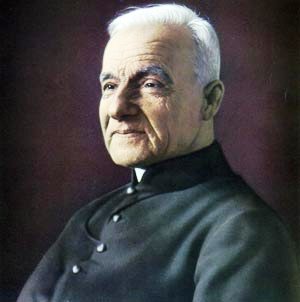
However, there was no sign of that when Brother André Bessette, the humble porter of Notre Dame College in Montreal, began his campaign to build an oratory dedicated to his beloved St. Joseph to which he attributed the many healings for which this brother of the Congregation of Holy Cross was known for. Stimulated by donations large and small from many whose lives had been touched by the holy man, construction began in 1914 and by 1931 there were gleaming walls, but the money ran out. “Put a statue of St. Joseph in the middle. If he wants a roof over his head, he’ll get it,” advised the saint who referred to himself as “St.Joseph’s little dog”. The magnificent Oratory on Mount Royal took 50 years to build though Brother André, who died in 1937, didn’t live to see its completion in 1954.
A new era
Then came the centennial of Canadian Confederation in 1967 – a year of immese celebrations from coast to coast by Canadians oblivious to the darkness coming in December of that year. It came in the form of The Criminal Law Amendment Act or C-195, an omnibus bill introduced by then Justice Minister Pierre Elliot Trudeau, proposing controversial reforms to the Criminal Code including the decriminalization of homosexuality and the legalization of abortion under certain conditions.
Which was exactly when the gates of hell opened for Canada. From then on, the courts and various legal bodies struggled over the issue. But that ended in 1988 when the Supreme Court of Canada struck down the existing abortion law as unconstitutional. Since then, Canada has had no abortion law whatsoever, meaning that abortion has been legal at any stage in a woman’s pregnancy, and is publicly funded as a medical procedure under the Canada Health Act.
Meanwhile, life continued on as ‘normal’ in Canada. Yet, almost undetected, the soul of the nation was changing fast. And not for the better.
Yet Canadians, such as Quebec filmmaker Denys Arcand, were noticing. In 2003, Arcand released The Barbarian Invasions, a grim portrait of what Canada had allowed itself to become. Despite possessing a landscape almost beyond magnificence.
The Barbarian Invasions
The plot revolves around a university professor and his battle with terminal cancer within Quebec’s socialized health system that won’t provide him sufficient medication to ease the pain of his last days.
Picture the scene. Rémy, a Rabelaisian professor who loves radical socialism, is dying in a squalid Montreal hospital where Arcand actually took his cameras to film. It’s an ugly picture of hallway healthcare in Canada. The camera pans down filthy hallways lined with actual gurneys on which patients lie unattended, telegraphing to the audience the deep dysfunction into which this government-run hospital has fallen.
Into this dystopia steps Rémy’s son, Sébastian, who, at the insistence of his mother (Rémy’s ex-wife Louise), leaves his job as an international financier in London to help his father who disapproves of his son’s capitalist career. What follows is a comic critique of the achievements of socialism where, ironically, money becomes the only way to bypass the havoc it has created. Indeed, it’s only by bribing a hospital administrator and the head of the hospital’s vicious union that Sébastian can get his father into a private room on an otherwise empty floor. Even so, sufficient pain relief is available only through the services of a local junkie who supplies heroin to ease Rémy’s pain.
Thus Arcand paints a harrowing picture of contemporary life in Quebec, showing where the beliefs of Rémy and his friends have taken la belle provence. The microcosm of Rémy’s last days then morphs into the macrocosm of Quebec itself where in an unforgettable scene an auctioneer visits an old priest in Montreal. The priest takes her to the church basement which is full of plastic-covered statues and chalices he wants to sell. The auctioneer tells him they’re of greater value to his parishioners than on the world market. “In other words, they are worthless,” the priest replies.
What do Canada’s saints think?
I wonder what Brother André thinks of all this. Does he recognize his beloved Quebec at all? Does he recognize the Quebec that, before the Quiet Revolution, relied on priests, nuns and lay Catholics to operate its hospitals and schools, and relied on the high Catholic birthrate for its survival in Canada?
What would Venerable Jeanne Mance say about the health care and education systems in Quebec and the rest of Canada today? Would the French-born Mance, who overcame extreme hardship to found the first hospital in Montreal, view today’s Canadian hospitals favorably? Would she approve of the campaign by some physicians for euthanasia even for children on “compassionate” grounds? What would St.Marie de l’Incarnation and her Ursuline Sisters, who came to Quebec in 1639 to found the Hotel Dieu Hospital in Quebec City, say about the state of the Montreal hospital filmed by Arcand? And what would St. Marguerite Bourgeoys, who established the Congregation of Notre-Dame to teach colonist and native children, think of Rémy’s fellow academics who gather round to toast their friend and witness his suicide?
Postmodern Quebec
In postmodern Quebec, it’s long been fashionable to revile the foundational period of Canadian history as “unenlightened.” Arcand’s characters reflect this. “It is customary to denigrate all this now as clericalized, superstitious hokum, the antiquated mores of a primitive society,” notes Conrad Black. Yet this is precisely the kind of “superstitious hokum” that produced the Canadian martyrs, Marguerite Bourgeoys, Brother André and so many others.
“It need hardly be emphasized how far into memory the ethos of that time has receded in Quebec and, certainly, modernization was required,” Black continues. Even so, Duplessis’ Quebec was certainly not the Great Darkness as the mythology of the Quiet Revolution claims: “It built 3,000 schools, most of Quebec’s universities and hospitals, roads and autoroutes, brought electricity to rural areas, and vastly improved social services, precisely because the government could pay very modest wages and salaries to un-unionized, un-avaricious, clerical personnel, fiercely dedicated like Brother André, avoiding debt and stimulating prosperity and economic activity with low taxes.”
Some darkness!
In fact, the Duplessis era was the culmination of the Church in Quebec that preserved the language and almost all social services in French Quebec for 350 years – from the times of Champlain to the Quiet Revolution – all the while rendering great service to the unity of Canada.
But eventually, the Church in Quebec was eclipsed by two events – the death of Duplessis in September 1959 and the march of progressive political science in the 1960s which ushered in the Quiet Revolution, that swift socio-cultural shift toward a highly secular, socially liberal welfare state, the consequences of which are the focus of Arcand’s prophetic film.
From bad to worse
Why prophetic? Because today – sixty years later – the relentless progressives and their social justice warriors continue to have their way, having usurped the role of God as the nation’s redeemers. And as such, rather than saving souls, they remain focused on creating an egalitarian utopian society on earth while endlessly promoting what they call ‘Canadian values’ such as diversity, the right to abort, the right to assisted suicide, the right to pansexual behaviour and the right to smoke cannabis all day long.
So given that framework, what kind of future – except one of self-absorption, alienation, hedonism, financial failure and state assisted death – is possible when the nation’s politicians, lawyers and lobbyists publicly deny the source of all life and all true law in the name of diversity? Which, in truth, militates philosophically against any actual national cohesion or even coherence, leaving the nation to fragment spontaneously.
As an example, take the City of Montreal’s recent decision to take down the crucifix that has hung in its council chambers since 1937 and move it to its new home. A museum!
The issue of crucifixes in legislative chambers across Quebec – particularly the one prominently displayed at the provincial legislature in Quebec City – continues to be central to the province’s debate over secularism.
Last month, Councillor Laurence Lavigne Lalonde told the city’s executive committee that the crucifix was installed in a different era to remind councillors of the oath before God that they took and that it won’t be put back in the chamber when city hall reopens.“I think we can agree the context has changed today,” Lavigne Lalonde said, noting society is now represented by democratic institutions that are secular, neutral and open.
The debate came as the government moves to impose strict religious neutrality rules on state employees in positions of authority, including teachers, judges and police officers, who would be forbidden from wearing visible religious symbols. As for the crucifix in the Quebec National Assembly, Premier François Legault said: “Everyone must make compromises. It’s all part of secularism discussions.”
Dividing through Diversity
And so it goes. Yet as the social justice warriors and progressive planners do everything in their power to remove Christianity from Canada’s body politic, they fully expect the nation to thrive and remain healthy on a diet of their godless so-called Canadian values.
Well, good luck with that! Which brings us to the ‘ultimate’ Canadian value – diversity – which, though proclaimed 24/7 across all media, is in truth a perniciously divisive political tool which pretends there are great differences between Canadians from all sorts of backgrounds, all of which must be absorbed into the culture for the sake of ‘unity’. When the truth is that all Canadians are created and loved by God Who expects them to obey the natural laws written in their hearts, just as He does of all His India- or Africa- or China-born children emigrating to Canada. And cultural differences don’t alter this reality one bit!
The truth is that these so-called secular values aren’t merely false, they are not values at all! They’re nothing! It’s as if Canada has become one giant Seinfeld set by redefining itself as the nation about nothing! Confirmed again these last few weeks by a prime minister mired in a scandal apparently about nothing while he mouths meaningless platitudes and repeats empty mantras about climate change and jobs, jobs, jobs.
Yet the average Canadian is expected to believe that the toxic green gospel and mindless ideology of Trudeau and most of the politicians across Canada are an improvement over Christianity and all its ‘thou shalt nots’.
How little they understand that because Canada has been foundationally Christian from its very beginnings, that Christianity’s removal has been akin to filleting a living fish and expecting it to survive.
Logically, it can’t. And it won’t, if the pattern of the past four years under the Trudeau government — which have been pointing to financial and moral ruin on so many fronts — are any indication, including Canada’s oil business which is being deliberately shut down in the name of climate change, yet another Marxist ideology pretending to be science.
Post-national State
There is another even more ominous sign of Canada being lost as well, and deliberately so. That came with Justin Trudeau’s declaration to the New York Times that Canada is now a post-national state, one without an identity. An identity which, it must be said, has been deliberately removed by powers and principalities who hate Christianity and supplant it with formulaic ideology where vision should be.
Last month, Canadians were further reminded of the hatred for Canada’s foundational connection to Jesus Christ when a priest celebrating Mass in St.Joseph’s Oratory was stabbed by a 32-year-old assailant.
As for Montreal Mayor Valérie Plante’s reaction, she said on Twitter: “What a horrible and inexcusable gesture that has no place in Montreal. I am relieved to learn that Father Claude Grou … is out of danger and in stable condition. In the name of all Montrealers, I wish him a speedy recovery.”
How about Canada? Does she wish this country a speedy recovery? Which would require Canada to reject its destructive secularism and return Jesus Christ to the Public Square, thereby restoring this once great nation to wholeness, unity and the functional morality of the Ten Commandments?
While such a return to sanity and health doesn’t look likely at the moment, St. André Bessette has always had the answer. It’s found in front of the Basilica towers where a statue of Saint Joseph holding the Child Jesus stands. On its stone pedestal are the words which the saint calls out from heaven: ITE AD JOSEPH — GO TO JOSEPH!
Who just happens to be the patron saint of Canada!

